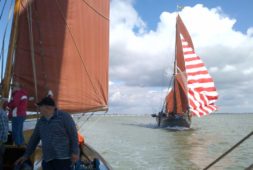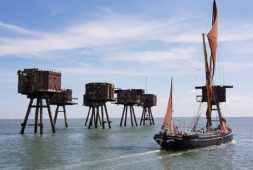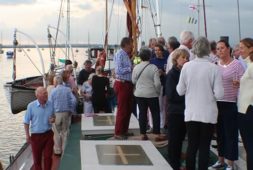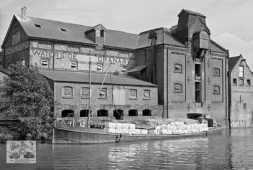Ironsides sailing area is the Thames Estuary from Aldeburgh in Suffolk to Whitstable on the North Kent Coast.
We can arrange to start and finish trips from Maldon, Pin Mill, Chatham and of course London.

For further information please get in contact with Ironsides captain.
Thanks to Ironsides Sailing Barge for letting me hire out the Barge as a venue for my 21st birthday. It managed to add something different to my party and my friends really enjoyed being on the boat…
Charlotte D, -Me and my family had a wonderful time on Ironsides Barge, sailing up and down the River Medway. They day was very sunny and the crew were very informative and helpful. Thanks for the experience, will have to do again soon…
Tim, -
Medway 25 May 2019 Saturday
Blackwater 8 June 2019 Saturday
Thames 22 June 2019 Saturday
See full list…

A great view sailing past the Maunsell Forts on the Thames estuary. The Maunsell Forts are armed towers built in the Thames estuary during the Second World War to help defend the United Kingdom. They were operated as army and navy forts, and named after their designer, Guy Maunsell.
Read More
What a great experience for me and my friends to be able to go sailing on an original Thames sailing barge. The captain was brilliant and explained about Ironsides barge and it is now 117 years old and built in Essex.
Read More
IRONSIDES was built by Stanfield and Clarke, Grays, Essex in 1900 and sold to Associated Portland Cement Manufacturers. She carried stone from Portland to London under sail alone. She was nearly lost after a collision at Limehouse around 1909 and nearly lost again in a gale at Dungeness in 1928.
Read More